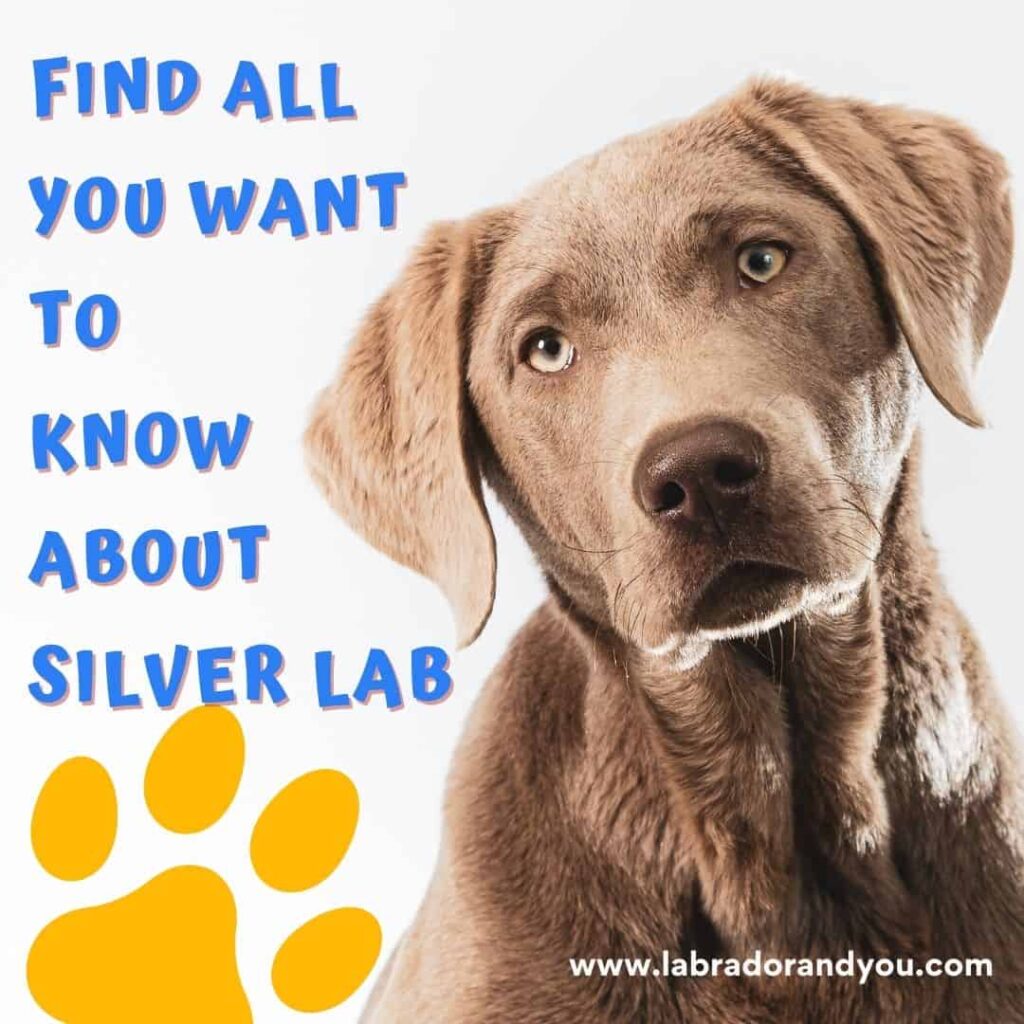While dogs and cats appear mortal enemies, the reality is different. There are videos of cats and dogs cuddling all on YouTube. Not all dogs and cats are best friends; however, labradors are good with cats. A well-trained labrador won’t ever harm or kill a cat. If you want to keep both of them, there are some strategies you need to follow.
Factors Influencing Cohabilitation Mentality In Dogs
Intelligence
Each dog has a different intelligence level. Dog breeds, such as Labradors, rank high in this category. They are people pleasers. Labrador retriever is quick at learning commands and obeys 95% of the time. Labs will cooperate with you and the feline friend.
can a dog with high prey drive live with a cat?
The breed is very important for compatibility. Labradors have been retrieving drowned prey since the beginning. They are not usually intrigued by any warm and moving animal. They are not solo hunters and need humans. Their soft mouths and prey drive do not make them bite the retrieved animal.
Training and Socialization
Training and socialization are great in toning down any aggressive temperament. Introducing cats and dogs early is a good idea. It has a higher chance of successful introduction. Study your dog’s behavior around other pets, unfamiliar humans, and situations.
Do they obey you? If your new dog chases everything, use proper training and socialization techniques before welcoming a new cat.
American labs focus more on formal training, even for a labrador puppy. Their working backgrounds make these labrador retrievers good. They are playful and active throughout their lives. They will be fine with a cat’s presence.
Puppyhood in English labradors lasts longer than in their American counterparts. Training can be challenging. English labs mature into calm dogs. An active cat is an ideal match for this lab’s personality.

Why Does A Labrador Retriever Tend to Get Along With Cats?
Labrador retrievers’ temperament benefits their friendship with cats. But will a labrador ever kill a cat? NO. Let’s dig deep and see why.
Labrador Dog Breed Is Gentle
Even during hunting trips, labs are gentle. Their tolerance is the best thing and makes them excellent family dogs. They were meant to procure the bird or animal with their soft mouths. Even in their aggressive state, they never hurt the prey.
Prior Socialization is Key
Labrador retrievers are curious and friendly. Proper socialization and training will tame the curiosity. See how your dog reacts to unfamiliar pets or even humans. If they get too excited, start working on their social behavior. Start taking them out to a dog park.
Labs Aim To Please
A labrador retriever constantly seeks their owner’s approval. And that includes accepting cats as part of the family. Territorial temptations might be visible on the first meet but fade with time. Seeing the owners accepting the new cat, they will follow it.
Not aggressive
Labradors are non-aggressive by nature despite being hunter breeds. Though their energy levels can get too much, they never attack unprovoked.
Not territorial
Labradors are not territorial, making it easier to introduce them to cats. They are happy to be under the same roof as them and don’t get jealous. They are not overtly protective of their food. In case the cat wants some, they can share.
Easily trainable
Training a labrador retriever is straightforward compared to other breeds. They can be trained to keep the chase instinct in check. Impulse control will aid in peaceful coexistence.

What’s The Best Time to Introduce Cats and Other Dogs?
Timing is crucial when introducing dogs and cats. You can introduce any age puppy to any age cat. The best combination is lab puppies to older cats and older labs to kittens. A less mobile and older cat will get along better with your lab puppy. While the lab energy may initially stress the cat, they adapt.
There is no such thing as perfect timing. You could do everything, and the pets may not like other animals. If your new labrador is growling at the cat after several introductions, they might not change.
Hissing or swatting cats indicates stress. In situations like these, the pairing will not work. Do not leave them unattended if you are not confident about their good behavior. One bad interaction between them can turn your efforts into vain.
The initial time must be taken seriously to ensure they feel safe in each other’s presence. It can take months. Being patient is the main goal. Offer them a treat after each meeting.

How to Introduce a Cat to a Dog?
Half the battle is won if you know the right methods to introduce a cat to a dog. A solid start will ensure a good bond and mutual respect. The age of the pets is a significant factor in all cases.
The crate and leash method
The crate and leash process is great if you bring a labrador puppy home to an adult cat. The cat will still dominate but become accepting slowly. Follow the below steps.
- Let the pooch be in a crate, and bring the cat.
- Keep the cat in elevated positions or high places to ensure they feel dominating.
- Now, move toward the leash part. Keep the cat on a table and the new puppy on a leash in a separate room.
- Give a treat to both on calming down.
- Practice this several times till they are a few feet from one another.
- Try this without a leash under your supervision.
- Ensure there is always an escape route. It makes the pet comfortable.
- When both are loose and calm, know they are ok together.

The dinner method
The dinner method is excellent for introducing young kittens to an adult labrador. A young kitten at their growing stage has a higher appetite. Food reliance can be used as a trick to make them friends.
- Keep the dog and the kitty separate. Place their food on opposite sides of the same door. Slowly they get used to their roommate’s smell and sound. Correct your dog if they begin to whine or scratch.
- Now place the cat in the crate and the dog on the leash. This enables visual association. Please do it quickly and then increase it in the long run.
- Now, lose the cat while the dog is on lease. It will help cats to roam around without being threatened.
- Correct the dog verbally if they are aggressive. If not, reward it by giving treats.
Several calm interactions mean they are ready and do not require supervision.

How do you introduce the dog breed to the cat?
Always Be Present
Be present during all interactions, especially the first encounter. It is vital for the labrador mindset as they like to please. Your presence reflects your acceptance toward the cat. They will be more at ease to the new feline. Absence can result in a bad interaction.
Neutral Location
Pick a neutral location for initial introductions. It eliminates the chances of territorial instincts. A place where the animal’s items are kept must be avoided. The kitchen, bathroom, or any space outside works great.
Don’t Hold the Cat!
Cats tend to be more nervous. Their highly sharp claws can harm. Avoid holding your cat to prevent injuries.
Use A Leash
A leash is beneficial if things go out of hand or your dog starts chasing cats. Let it be a little loose. Though labradors are massive, a tight leash can suffocate them. A loose leash conveys they can escape if needed.
Give the Cat Room to Escape
Allow the two pets to explore for the first time. Cats can get scared when you introduce a labrador. Make them feel comfortable. A space with countertops would be more helpful.
Allow Them Both to Defend
Now comes the most challenging part. You must take a referee’s role and know when to call it quits. Cats swat when they feel threatened. Labradors will get startled but will tolerate it. A lab sniffs during the introduction. Hissing and growling sounds are red flags, and time to take a break.
Make sure your cat is always comfortable.
A cat should always have an escape route. A minor discomfort can make them flee. Do not bring them back if it happens. Let them calm down and repeat another session later.
Avoid introductions around children.
Don’t introduce them at first among children. Anxiety makes the two animals uncomfortable. It can result in the child getting injured.
Create Safe Spaces for Your Lab and Cat
Everyone requires their own space. The pets are no different and love returning to their safe area. A cat tree or cat tower is best since cats like elevated spaces. Cat people must take note. In contrast, dogs love their crates. Having more pets means more responsibility. Here are a few things cats and labradors need.
- Toys for cats and dogs
- Separate feeding pots
- A crate for the puppy and a litter box for the cat
Ensure you don’t cause conflict with their interests. Keep them at a distance and provide separate toys and feeding pots. You must train your cats to poop in the litter box as a pet owner. Teach your labrador to maintain distance from the sofa.

What Will You Require to Keep Your Adult Dog and Cats Safe?
It is the owner’s responsibility to keep the pets and home safe. Here are a few tips to ensure it.
- Clean crates and litter boxes regularly to prevent diseases in the best way.
- Observe your pet’s behavior and consult a vet if there is a change.
- Keep the pet room and bed cleaned at fixed intervals. It is a good way to ensure quality health.
- Treat any wound or cut immediately to prevent future health concerns.
- Regular and timely vaccination is vital.
- The pet owner must use a separate and certified dog and cat shampoo.
- Avoid growing poisonous plants, as pets can chew them.
- Keep cats safe from predators like stray dogs.
- Since cats are active, they can hurt themselves. Tightening heavy objects is essential in preventing them from falling on your pet.
- Check your dog and cat regularly for parasites in the fur. Immediate medication is recommended as it causes diseases.
Why Do Some Labradors chase cats?
Several triggers can cause it – prey trigger, sound, or motion. Labs also chase them during play.
Prey Trigger
Labrador retrievers on hunts were not taught to catch prey alive. They brought drowned pigeons or pulled fishing nets for the labrador owner. Hence, they don’t have the urge to catch alive cats.
However, a motion trigger can cause a high prey drive and strong desire. Moving cats appear to them as small running object or balls, making a lab chase them.
It is different from hunting dogs, who move their feet silently. Labradors do not attack cats when near them. They move their tails speedily. Cats retaliating strongly is a good sign; the dog will not attack. Reaching a cat does not mean he will bite. However, adult dogs can scare small cats.
The Meow Sound Triggers a Labrador To Chase
The meow sound of the cats also triggers labradors to chase. You can control the trigger with appropriate training. Socialization in the upcoming training sessions is the best option. Keep them separate initially for best results.

4 best dogs for cats
Cats and dogs can co-exist happily. Here are the dogs that are good with cats
Golden Retriever
Golden retrievers are the best fit for cats and other animals. They readily accept cats and are empathetic. However, early training sessions to not chase the kittens are required. Once achieved, they are an ideal match and among the most friendly dog breeds that are good with cats.

Beagle
Beagles are happy with a cat’s company. This dog breed was bred to hunt in groups and look at cats like companions. They team up with cats due to their pack mentality. Beagles are sociable and get along with family members and other pets.
Pug
The friendly pug is excellent. If the cat allows, they can quickly become friends. They can bond well with each other during alone time. The sweet nature of pugs makes them safe around small animals.
Bichon Frise
The entertaining and happy Bichon Frise is an ideal cat companion among other dogs. Sometimes, the outgoing Bichon can be too much for cats. If the charming traits of the sweet dog are accepted, they can be friends.
Will a Labrador Kill a Cat?
Labradors won’t harm a cat. Generally, labradors never attack small animals. They were bred to retrieve dead prey. However, be cautious, as a calm dog can turn into a nightmare without training.

FAQ
Can Labrador Puppies Get Along With Cats?
The adult lab is heavier than cats; the latter can feel intimidated. A small puppy has a higher chance of mixing due to its size. Medium-sized dogs are also good with cats.
What if Your Labrador Had Lived With a Cat Before?
There should be no trouble if your labrador has lived with a cat previously. They will only show some curiousness which is normal.
What If You Are Unaware of the Behavior Of Both cats and Labradors?
Introduce each other slowly. It will accustom them to each other’s smell and presence. Toys can also be exchanged.
Do Labs possess aggressive behavior toward cats?
Labs are gentle breeds. However, aggression can be due to a specific cause. It largely depends on the individual dog’s personality, training, and socialization.
Do Labs see cats as prey?
Labs don’t have a high prey drive nor see cats as prey.
Will a Labrador attack an intruder?
Labs are generally friendly and not aggressive toward people. However, they can protect their owners if they perceive a threat. Protective instincts may not always manifest as aggression towards intruders.
are labradoodles good with cats?
Labradoodles do quite well with cats, especially if socialized with them from a young age. Their friendly, energetic temperament usually translates well towards cats. They have a moderate to low prey drive compared to some breeds, making them less likely to chase or harm cats instinctively.
are chocolate labs good with cats?
Chocolate labs also tend to be compatible with cats in most cases, particularly if raised with them. Their friendly nature helps them get along with feline housemates. Chocolate labs are big and energetic, so their size and excitability is something to be cautious about with cats. Don’t let them play too roughly.
Are black Labs good around cats?
The color of a Lab doesn’t determine its behavior toward cats. Black Labs can be good around cats but focus on the individual dog’s personality, training, and socialization.
Author Profile
- Site Owner And Dog Lover
-
Aritra, the founder of Labradorandyou.com, is a lifelong dog lover whose passion ignited for Labradors for their loyalty and intelligence. With extensive research and personal experiences, Aritra has become a Labrador expert, offering a rich resource on the breed. Labradorandyou.com provides reliable, timely, and evidence-based information, including Labrador-specific product reviews, training techniques, and care tips.
Labradorandyou.com was born out of Aritra's passion and his desire to share his profound knowledge about the breed. The site serves as a comprehensive resource, offering a wealth of up-to-date information for Labrador owners and enthusiasts alike
Also by the author
-
 Lab-TypesNovember 17, 2023Old Dog Seizures: Causes, Symptoms, and Treatment Options
Lab-TypesNovember 17, 2023Old Dog Seizures: Causes, Symptoms, and Treatment Options
-
 Lab-TypesNovember 17, 2023Why Is My Dogs Poop Yellow? 8 Reasons & Solutions
Lab-TypesNovember 17, 2023Why Is My Dogs Poop Yellow? 8 Reasons & Solutions
-
 ReviewsNovember 17, 2023The Only Hill’s Science Diet Review You Need To Read
ReviewsNovember 17, 2023The Only Hill’s Science Diet Review You Need To Read
-
 Lab-TypesNovember 17, 2023How To Adopt An Emotional Support Dog?
Lab-TypesNovember 17, 2023How To Adopt An Emotional Support Dog?





